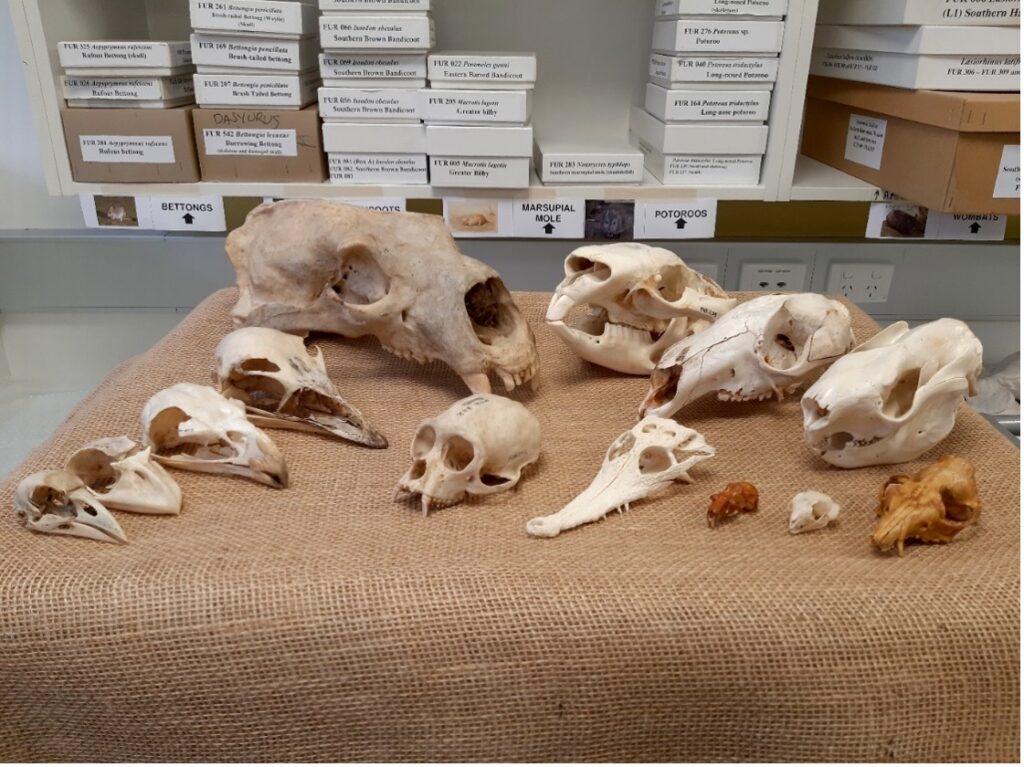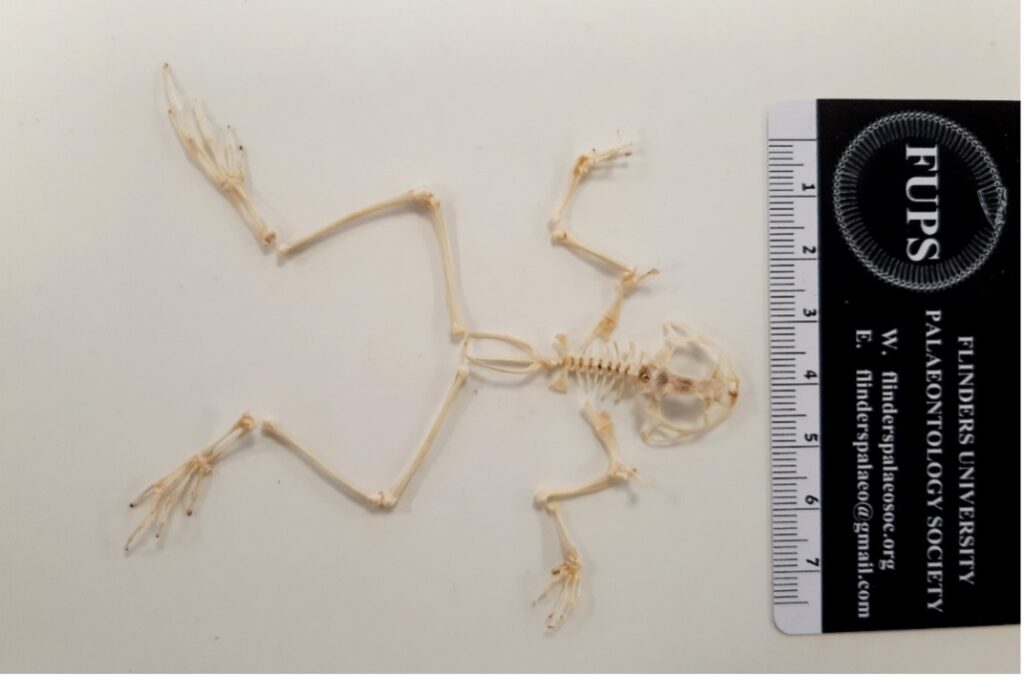The Flinders University Palaeontology Research Group have been awarded $6,700 from the Federally funded Community Heritage Grant Program to undertake a preservation needs assessment of the Flinders University Vertebrate Collection (FUVC).
Though many Australian universities had natural history collections during in the 19th and early 20th centuries, over time many have been lost, sold, or remain only as legacy collections.
“University based collections are invaluable resources for researchers studying the natural world. However, unlike state run museum collections, they are often unfunded and poorly maintained,” Miss Lisa Nink, Collection Manager of the FUVC, explains.

Founded as a small teaching and research collection in the 1980s, the FUVC has grown to over 1,500 skulls and skeletons representing more than 200 species of birds, reptiles, amphibians, fish and mammals. Many rare gems can be found within its Aladdin’s cave of boxes such as kangaroo skulls representing different species from across Australia, and skeletons of a big hairy Armadillo from Argentina, a southern cassowary from Queensland, and a tiny Wokan cannibal frog from Papua New Guinea.
The assessment will not only help to seek further funding for conservation of the FUVC, but it will also help highlight the plight of Australia’s remaining university based natural history collections.
“The Flinders Palaeontology Lab is renowned for its cabinets full of vertebrate fossils obtained from many important sites across Australia, but it is not a permanent collection. Our researchers collect fossils, then invest in their preservation (preparation and stabilisation) before studying them. But after that they are lodged in state museums.” Professor Gavin Prideaux, Director of the Flinders Palaeontology Research Group explained.
“The FUVC is different. This collection, composed mainly of the skeletons and skulls of modern animals, is permanent. It is critical for identifying fossil specimens and working out how they differ from modern species.”
But this collection is built entirely on a volunteer basis. “This means that we struggle to source funding for purchasing the materials we need to maintain and preserve the FUVC, which is exactly what this new grant will help us do,” Miss Nink explained.
“Collections like the FUVC are time capsules for our natural heritage and preserve information for studying the past, present and future of our natural world. As palaeontologists we rely on skeletons of modern animals to compare with and help us interpret fossil animals, but the FUVC also provides a data resource for those studying living species.”
“These collections are also used in teaching and outreach, provide references for artists and provide material for public displays that feed our curiosity.”
In addition to making their collection available to researchers, the Flinders University Palaeontology Research Group want members of the public to make use of the collection too.
“The FUVC is publicly accessible collection by appointment. Whether you are a researcher, an artist, or you want to try and discover what that bone you found on your walk is, we’d love to hear from you.”
You can find out more about the FUVC by visiting: https://sites.flinders.edu.au/palaeontology/home/vertebrate-collection/
The Community Heritage Grant program is funded by the Australian Government through the National Library of Australia, Department of Communications and the Arts, National Archives of Australia and the National Film and Sound Archive and National Museum of Australia and managed by the National Library of Australia.
